This article was medically reviewed by Sarah Gehrke, RN, MS. Sarah Gehrke is a Registered Nurse and Licensed Massage Therapist in Texas. Sarah has over 10 years of experience teaching and practicing phlebotomy and intravenous (IV) therapy using physical, psychological, and emotional support. She received her Massage Therapist License from the Amarillo Massage Therapy Institute in 2008 and a M.S. in Nursing from the University of Phoenix in 2013.
There are 11 references cited in this article, which can be found at the bottom of the page.
This article has been viewed 32,046 times.
Seizures can be scary, particularly grand mal seizures that result in repeated head movements or flailing limbs. Typically, the very first thing you want to do is to make the person safe by lowering them to the ground and removing any potentially harmful objects from the area. Then, you should call emergency services, particularly if it's the first time the person has ever had a seizure.[1] You can administer medications in the nose and through the mouth to help stop a seizure, but none of these medications are FDA approved for this use in the US outside of the hospital.[2] While it may be possible to stop a seizure, particularly if a person can feel one coming on, keeping the person safe and waiting out the seizure may be all you can do.
Steps
Protecting the Person from Harm
-
1Lower them to the ground. If the person is sitting or standing, you need to get them to the ground so they don't fall and injure themselves. Lower them as well as you can to the ground, trying to stay out of the way of any flailing limbs.[3]
- Place the person on their side. To help the person breathe, turn them so they are on their side. That will help keep their airway clear.
-
2Reduce the risk of injury by checking the area. Move anything away from the person that could cause them harm if they come in contact with it. Look for anything that is hard or sharp, and make sure it's out of range.[4]Advertisement
-
3Place something soft under the person's head. Often, seizures will result in repeated head movements. That could lead to the person injuring themselves if they bang their head against the floor. Place a pillow or a jacket underneath the person's head to reduce the chance of injury.[5]
-
4Stay clear of the person. Often, with a grand mal seizure, the person may flail their arms or legs. You shouldn't try to restrain the person. In fact, once you have them safe, it's a good idea to stay out of their way.[6]
Calling Emergency Services
-
1Call an ambulance if it's the first time the person has had a seizure. If you know the person well and they've never had a seizure before, you should call emergency services to get immediate medical care. They can assist in stopping the seizure once they arrive.[7]
-
2Call emergency services if the seizure lasts more than 5 minutes. Even if the person has had a seizure before, you should call emergency services if the seizure lasts more than 5 minutes. Begin the timer as soon as you can get the person safe.[8]
- You should also call emergency services if the person injures themselves, has trouble breathing, has more than one seizure in a row, or has another health condition such as diabetes or heart disease. Also, call if the seizure happened in water or if the person is pregnant.
- If you are questioning whether or not you should call emergency services, give them a call. It is always better to call if you're unsure.
-
3Stay with the person. If you're the only person there, it's important to stay with the person having the seizure so you can monitor them. Plus, they will be disoriented when they come out of the seizure, so they will need someone there.[9]
- Try to stay calm and collected. Be sure to check the person for injuries as they come out of the seizure; look for blood or bruises. Keep in mind, they may not be able to answer questions due to disorientation.
Administering Rescue Medications
-
1Help a person who feels a seizure onset by getting them water. In some cases, a person may be able to tell a seizure is coming on. In that case, they may take a pill in hopes of stopping the seizure before it starts. Help the person by finding them some water to take their medication.[10]
- Typically, benzodiazepines, such as lorazepam, diazepam, and midazolam, are prescribed for this purpose.
- If the person is already seizing, you should not put a pill in their mouth, as they could choke on it or inhale it into their lungs.
-
2Check for a medical alert bracelet or necklace. These pieces of jewelry can tell you whether the person is carrying medication that you can administer in case of a seizure. The jewelry can also tell you whether you should call emergency services or not, as well as who to call in an emergency.[11]
-
3Spray liquid medicine into the person's nose. In some cases, the person's doctor will have prescribed a liquid medication, benzodiazepine, to them. This medication is then sprayed into the person's nose. While this administration isn't FDA-approved yet, it is still common practice.[12]
-
4Use a syringe to administer liquid medication to the cheek as an alternative. Open the bottle of medication, typically midazolam, and push a clean syringe into the top, pushing the plunger down. Turn the bottle over and withdraw the prescribed amount of medication, which should be on the bottle.[13]
- Hold the person's chin gently and place the end of the syringe between the teeth and cheek on the side that's nearest the ground. Push the plunger down to release the medication.
- Sometimes, this medication comes in a pre-dosed ampoule that you can squeeze the medication from.
- The use of this medication in this way hasn't been approved by the FDA outside of hospitals, though it has been approved in the UK. However, it is still sometimes prescribed for this purpose. Generally, this medication is prescribed for children.
-
5Expect lorazepam or diazepam to be administered by IV. If the person is still seizing once emergency services arrive, they will likely administer one of these two drugs on the way to the hospital. They will likely use an IV to administer the drug, though diazepam may also be administered rectally.[14]
Warnings
- Sometimes passing out can lead to a muscular activity that mimics a seizure. This is called tonic-clonic convulsions. This type of activity often occurs when someone is anxious or in a stressful situation, such as someone that has a fear of needles and is having their blood drawn.⧼thumbs_response⧽
References
- ↑ https://www.cdc.gov/epilepsy/basics/first-aid.htm
- ↑ https://www.epilepsy.com/learn/managing-your-epilepsy/using-rescue-treatments
- ↑ https://mayoclinichealthsystem.org/hometown-health/speaking-of-health/how-to-help-someone-having-a-seizure
- ↑ https://www.cdc.gov/epilepsy/basics/first-aid.htm
- ↑ https://www.cdc.gov/epilepsy/basics/first-aid.htm
- ↑ https://mayoclinichealthsystem.org/hometown-health/speaking-of-health/how-to-help-someone-having-a-seizure
- ↑ https://mayoclinichealthsystem.org/hometown-health/speaking-of-health/how-to-help-someone-having-a-seizure
- ↑ https://www.cdc.gov/epilepsy/basics/first-aid.htm
- ↑ https://www.epilepsy.com/start-here/seizure-first-aid
- ↑ https://www.epilepsy.com/learn/managing-your-epilepsy/using-rescue-treatments
- ↑ https://mayoclinichealthsystem.org/hometown-health/speaking-of-health/how-to-help-someone-having-a-seizure
- ↑ https://www.epilepsy.com/treatment/seizure-rescue-therapies/nasal-rescue-medicines
- ↑ https://www.rch.org.au/kidsinfo/fact_sheets/Buccal_midazolam/
- ↑ https://onlinelibrary.wiley.com/doi/full/10.1002/ams2.582
About This Article
It can be really scary to see someone having a seizure, but unless the person has been prescribed medications to stop a seizure, there isn’t much you can do to stop one once it starts. Instead, help the person to the ground, and try to turn them onto their side so they can breathe easily. Move anything hard or sharp away from the person, and place something soft like a pillow or a jacket under the person’s head. If the person has never had a seizure before or the seizure lasts for more than 5 minutes, call for emergency medical help right away. Keep reading for advice from our Medical co-author on how to administer rescue medications if a doctor has prescribed them!

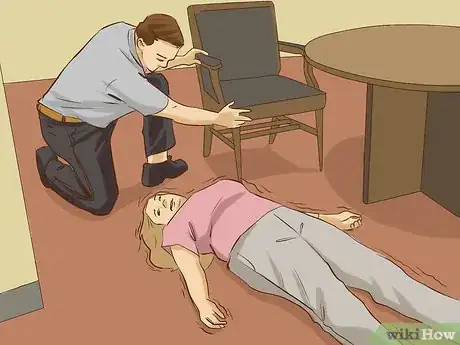

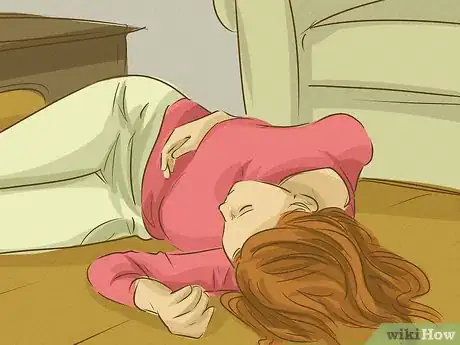
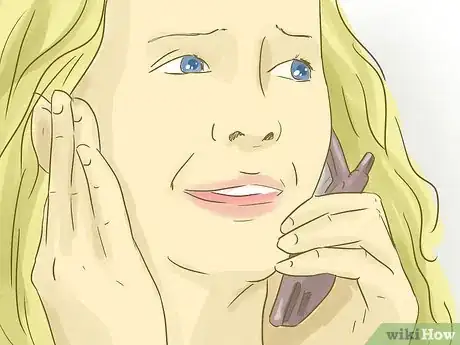

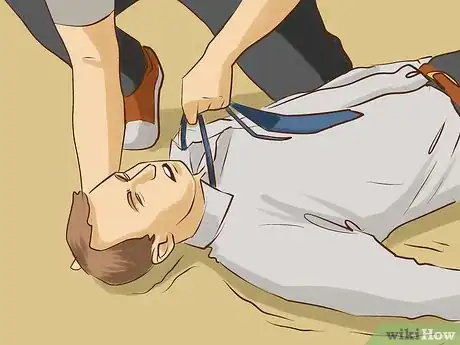

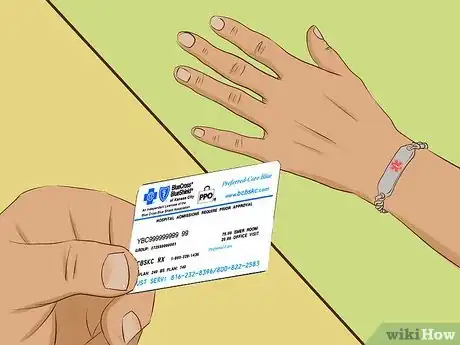
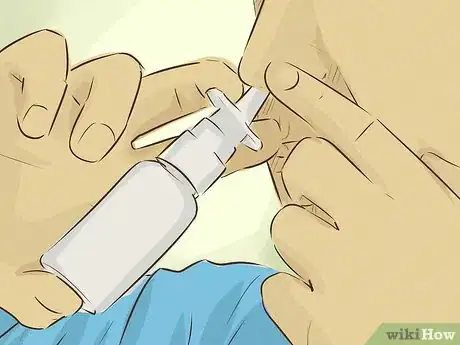
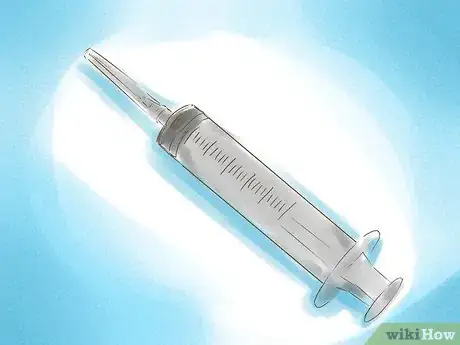




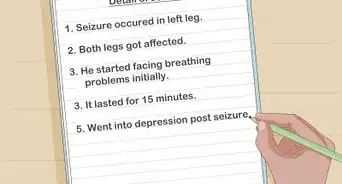














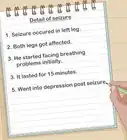



































Medical Disclaimer
The content of this article is not intended to be a substitute for professional medical advice, examination, diagnosis, or treatment. You should always contact your doctor or other qualified healthcare professional before starting, changing, or stopping any kind of health treatment.
Read More...